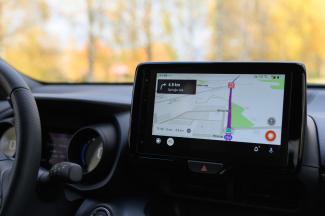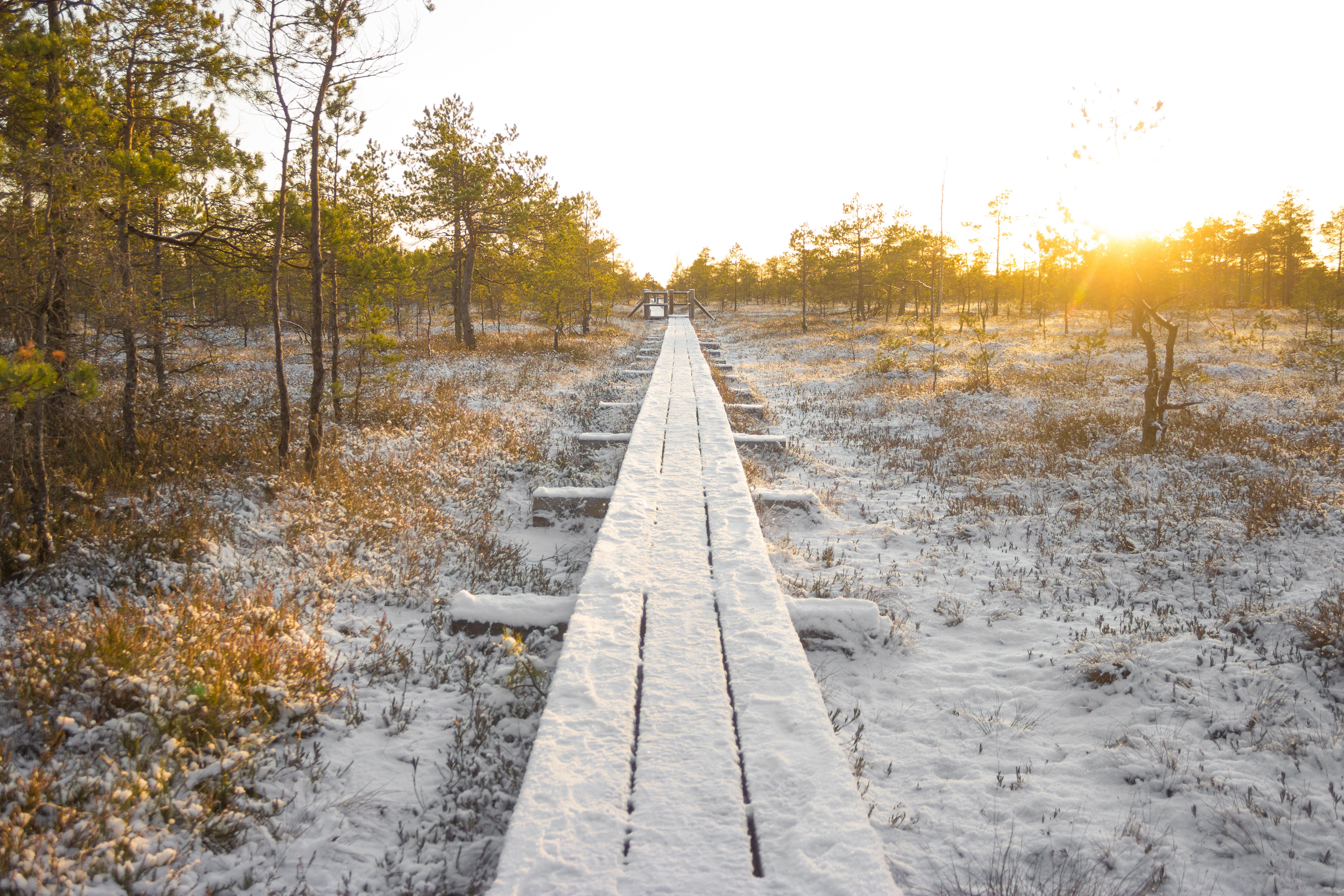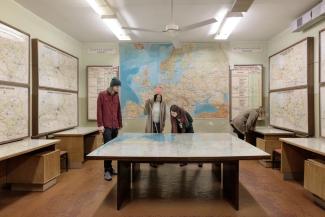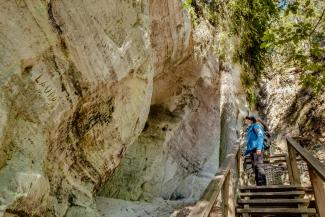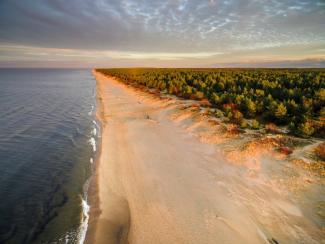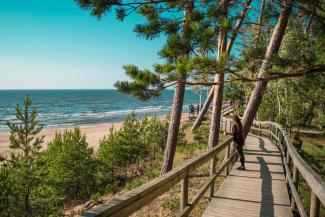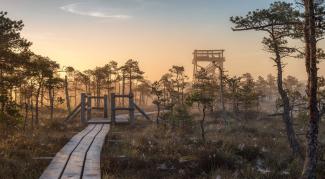A cultural and historical adventure from Riga to Valka
We invite you to take a trip along the Riga - Sigulda - Līgatne - Cēsis - Valmiera - Valka route. Travelling by car from Riga to Valka for two to three days will allow you to discover a range of interesting and historical objects. The route is intended for travellers who are looking for culture off the beaten tourist path and refined historical charm. The proposed route provides a deeper look at the diverse cultural and historical heritage of Vidzeme.
Route Overview
The route (~170 km) from Riga to Valka covers the Gauja River Valley, sandstone cliffs, caves, medieval castle ruins and military sites related to Latvian history. It allows you to explore the ancient Gauja Valley, experience the atmosphere of a baronial estate and learn about the events of World War II in Mores. We recommend dividing the trip into two or three days, staying overnight, for example, in the Latvian Capital of Culture 2025 – Cēsis.
Special stop – Cēsis
Cēsis is the Latvian Capital of Culture 2025, so we also recommend a stop to witness the activities planned in honour of this event. Guests will enjoy a rich cultural programme – from excellent music and art events to local festivals. In addition to the Cēsis Art Festival, a chess festival, plein air art, exhibitions, and unusual hikes and performances will provide cultural enrichment.
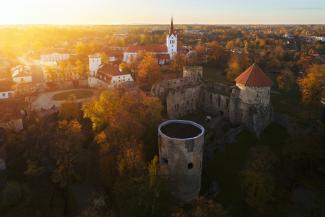
Velnala in Inčukalns
Inčukalns Velnala is a mysterious sandstone cave on the banks of the Gauja River, shrouded in myths and legends. It is believed that the devil himself lived in this dark cave – echoes of the legend can be heard within the walls and vaults of the cave. Inside the cave, twilight always reigns and the sound of underground water is everywhere, creating a magical atmosphere. The road to Velnala leads through meadows with peculiar, dead trees, which makes the picturesque landscape mystical. It is an unusual stop, where nature and folklore motifs merge into a single adventure.
Krimulda Medieval Castle Ruins and Manor
The Krimulda Medieval Castle Ruins are all that remains of the Riga Cathedral Chapter Castle built in the 13th century, located on the picturesque bank of the Gauja River Valley. The castle was the smallest of the three legendary castles in the Gauja River Valley, and it was never restored after being destroyed in 1601. However, the ruins remain impressive – they are called “Bellevue”, because from here you can see a beautiful view of the ancient valley.
Next to the ruins is Krimulda Manor, built as a residence for the Princes of Lieven in 1822. The manor complex includes the manager’s house, a carriage house, a granary, a drying house and a Swiss house with expressive and unique wood carvings. From the terrace and balcony of the manor house, there is a fabulous view of the Gauja River Valley, and it is also possible to watch the aerial cable car journey along the aerial cableway that connects both banks of the Gauja River. The manor’s outbuildings are built of boulders and boast rich decorative finishes.

Mores Battle Museum and Memorial Park
Mores Battle Museum is designed as a cultural, historical, educational and tourist attraction, marking the place where fierce battles took place between Latvian legionnaires and Soviet army soldiers from 26 September to 6 October 1944, during World War II.
Museum attractions include a model of the Mores Battle, weapons found at the battle sites, a T-34 tank and other historical evidence, items characterising the history of the parish, and souvenirs from local craftsmen. Next to the museum is a Mores Battle Memorial Park and a monument with reconstructions of battle trenches and bunkers, as well as mass graves of fallen soldiers, honouring the soldiers of both sides. The site is a reminder of the dramatic events that took place on the picturesque banks of the Gauja River and allows visitors to learn about the history of the war firsthand.
Līgatne Secret Bunker
The once top-secret Soviet bunker in rural Līgatne is located 9 metres underground and was built for the needs of the state elite during the Cold War, when the Soviet Union was preparing for a potential Western attack and US nuclear strike.
For 30 years, employees of the Līgatne rehabilitation centre did not suspect that a fully equipped shelter was located under their feet.
During the tour of the bunker, you can see authentic Soviet-era communications equipment, and plans and maps for nuclear war scenarios, as well as feel the atmosphere of that era. It is a unique place to experience the reality of the Cold War by entering the depths of the secrets of the past.
Līgatne Cellar Caves and Cliffs
The Līgatne sandstone cellar caves are labyrinths of amazing shapes and curves created by ancient people on the banks of the Līgatne River. In total, more than 300 caves were created in Līgatne, which in ancient times served as natural cellars for storing food. A notable sight is Lustūžis Cliff – a scenic cliff in the centre of Līgatne. Lustūžis is the only sandstone in Līgatne, where cellar caves are arranged on several floors. Today, Līgatne caves and cliffs offer travellers an exciting walk, allowing you to feel like an explorer, discover dark niches and imagine how these cellars were used by residents. It is a cultural and historical experience, as the caves tell stories about both the everyday life of Līgatne paper mill workers and the customs of that time.
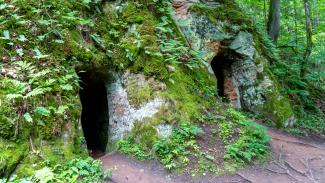
Erglu Cliffs
The Erglu Cliffs are one of the most impressive sandstone outcrops in Latvia and the entire Baltics – a ~700 m long and up to 22 m high rock wall in Gauja National Park. The cliffs rise above the left bank of the Gauja, ~7 km from Cēsis, and from the viewing platform at the top, a panoramic view of the ancient Gauja valley opens. The name comes from the echo that resembles the sounds of an organ.
The cliffs have many fractures, and there are also signs of individual blocks sliding and landslides, so being under the rock wall can be dangerous. On the walking trails of Erglu Cliffs, you can learn more about the beautiful and ancient Gauja, surrounded by stories, interesting plants and local birds.
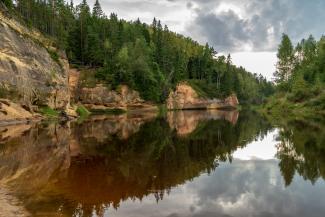
Āraiši Lake Castle Archaeological Park
Āraiši Lake Castle is the only reconstruction of a fortified settlement from the 8th/9th–10th century, making it a unique object not only in Latvia, but also in Europe.
The archaeological park stands out with unique archaeological finds, original reconstructions and the well-preserved cultural and historical landscapes characteristic of Vidzeme.
On the shore of the lake, you can see the ruins of the Āraiši medieval castle, though the buildings on Meitu Island are built as reconstructions based on archaeological data obtained in Latvia and neighbouring countries about such Stone and Bronze Age dwellings.
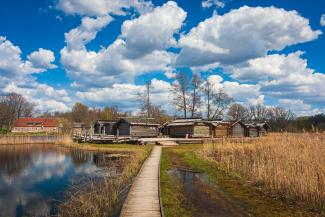
Ungurmuiža
Ungurmuiža Manor is an 18th-century Baroque wooden manor house – the only surviving building of its kind in Latvia. The manor house, built in 1732 by Baron von Kampenhausen for the needs of his family, is home to impressive, luxurious wall paintings – the ceiling and walls feature floral motifs, as well as scenes from the baron’s travels.
The park is home to ancient oaks, as well as a Baroque Tea House built in 1753. The manor complex also includes the governor’s and school buildings, granaries and servants’ quarters – all made of wood, harmoniously blending into the surrounding landscape.
Nowadays, Ungurmuiža houses a small museum and a guesthouse, and hosts concerts and events. Visitors are invited to enjoy the manor atmosphere while taking a romantic stroll under century-old oaks.
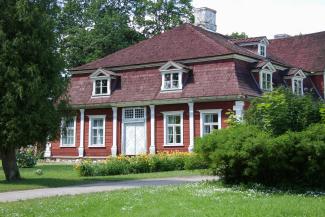
Sietiņiezis
Sietiņiezis is one of the highest white sandstone outcrops in Latvia at 15 m, and with a length of about half a kilometre. It is located on the right bank of the Gauja between Valmiera and Jāņmuiža, approximately 2 km downstream from Liepa rock. The rock surface is covered with small caves, resembling a sieve. This is where the name Sietiņiezis comes from.
From the southern part of Sietiņiezis, an impressive view of the ancient valley of the Gauja opens, surrounded by scenic pine forests. Here you can see both small caves and niches, as well as erosion ravines, as well as formations that resemble pillars.
For the convenience of visitors and for the purpose of nature conservation, well-maintained trails and recreation areas have been created in the area around Sietiņiezis.
Ērģeme Castle Ruins
Near Valka are the Ērģeme Castle Ruins, a historical and archaeological monument of national importance. The castle was first mentioned in writing in 1323. It was built around 1320, commissioned by Livonian Order master Gerhard von Jocke. The castle was built of local boulders, bricks and lime mortar. The outer wall of the castle formed a regular quadrangle, each side of which was 70 metres long. The structure was a convent-type castle, with two large fortification towers, and was surrounded by moats filled with water. The fore-castle was connected to the central part by a drawbridge. Nowadays, a small park and viewing platforms have been created in the castle ruins; in the summer, the Ērģeme Medieval Festival is held here, which fills the castle ruins with life.
Culinary Adventure in Vidzeme
Vidzeme is a region where Latvian culinary traditions have been preserved, often fused with features of other national cuisines, and modern innovations are also being created in cafes and restaurants, and on farms. While travelling through Vidzeme, we invite you to embark on gastronomic adventures based on the description we have prepared, which lists interesting restaurants, farms rich in traditions, rural markets and even a brewery and chocolate manufacturer. We are proud of the restaurants in Vidzeme that are included in the MICHELIN guide: PAVĀRU MĀJA in Līgatne, KEST in Cēsis, H.E. VANADZIŅŠ in Cēsis and AKUSTIKA in Valmiera.
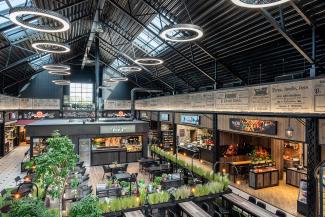
Planning Your Trip
An excellent and useful assistant in planning your journey is the trip planner on the Latvia Travel website. This is an essential virtual guide for individual travellers with features to help you plan your visit to Latvia, even over multiple days. We offer free maps of Latvia and informative materials for download. If you need printed materials in smaller quantities, please contact your nearest tourist information centre.
The Best Way to Travel
Summer trips to Latvia are even more exciting when visitors plan their own routes, travelling via public transport and continuing on foot or by bicycle, exploring every corner of the city, including its green areas and quiet parks. This is not only a healthier pace; it gives you more time to experience the unique atmosphere of Latvia. When planning a trip by car, remember that car rental options are widely available from both international and local providers.
